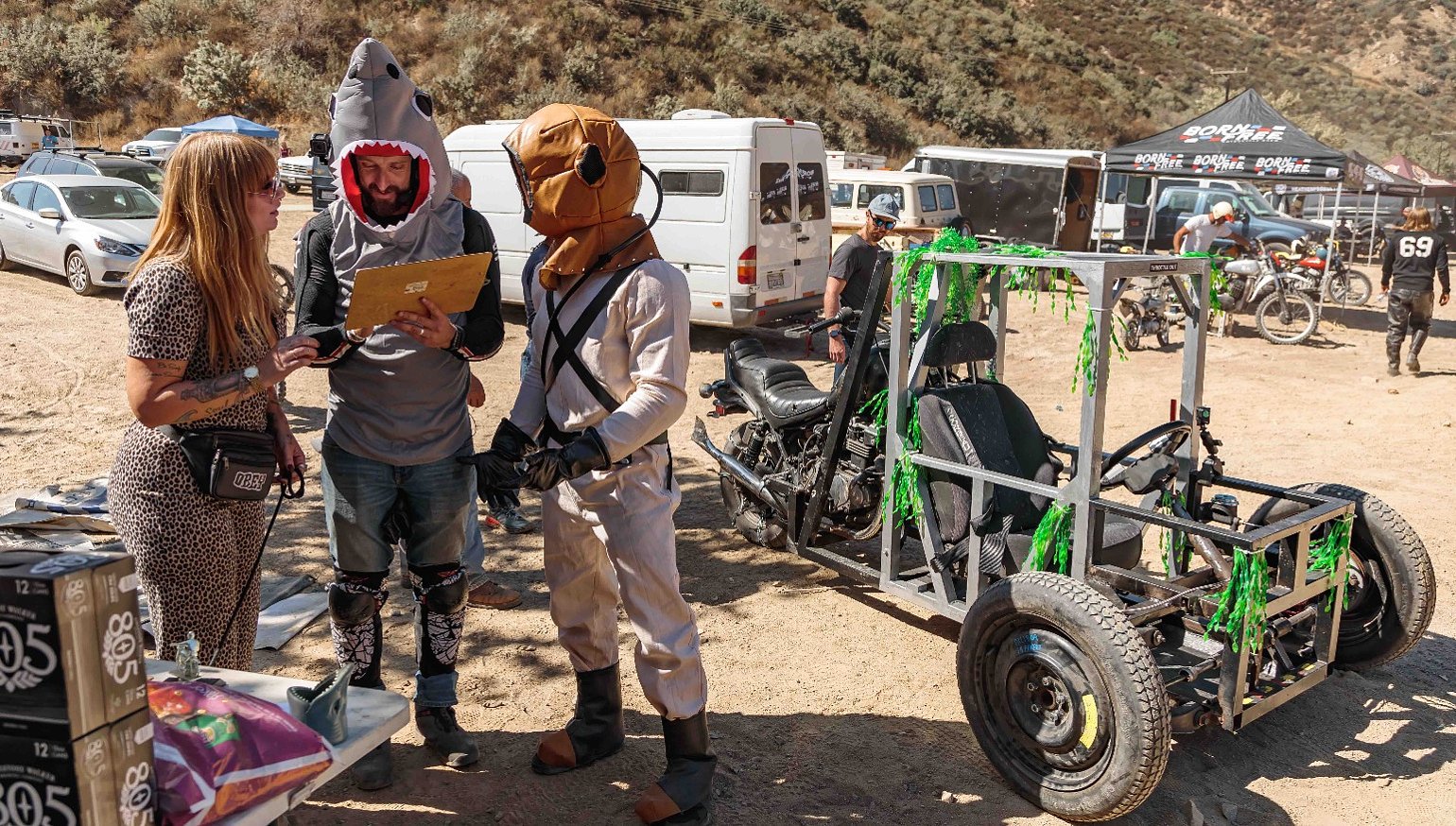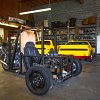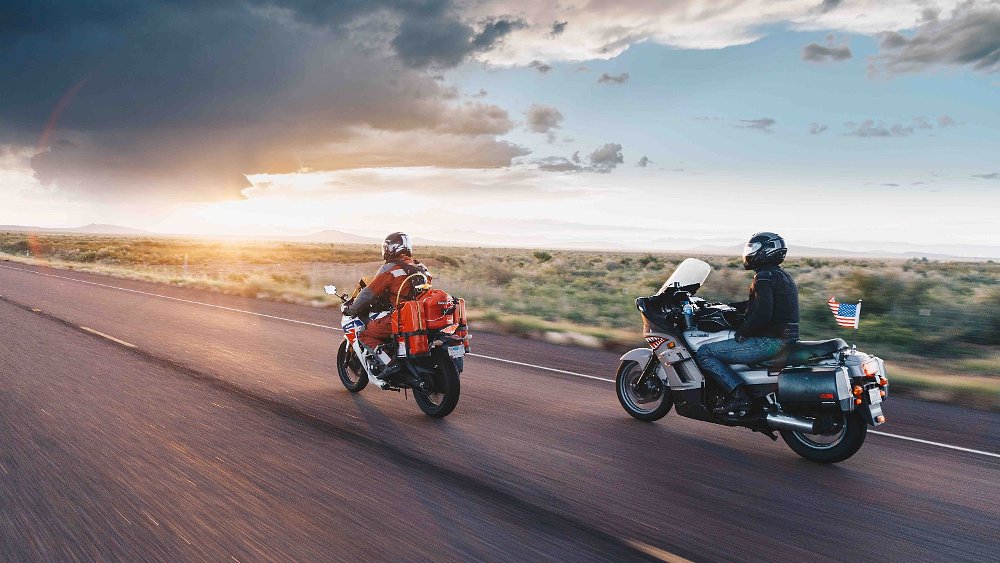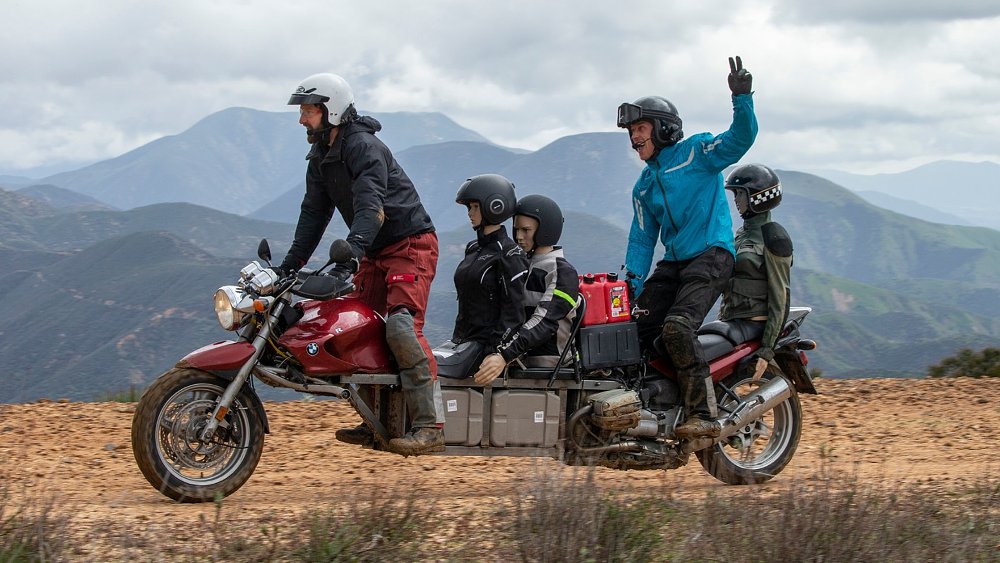Funny things happen when you search Craigslist for motorcycles and dial the “maximum price” down below $1,000. It starts to feel more like a lost-and-found bin than classifieds.
Mobility scooters, jackets, wheels, and a few fat-tire choppers clearly purchased in the early-2000s craze that are now hopelessly losing value; usually listed for $18 because oh-my-god-please-I-gotta-get-rid-of-this-thing-my-wife-is-going-to-kill-me. And then occasionally, a pot of gold. A gem nestled amongst the trash and scams and chrome, calling to you. It is the song of a dangerous siren, and one that we can rarely resist on Throttle Out.
This story is based on the latest episode of Throttle Out, now available at MotorTrend On Demand. You can find Ari and Zack on social media at @arihenning211 and @zackcourts.
In this case we weren’t sure what we were seeing: the back half of a 1980s Japanese cruiser (a Kawasaki 454 LTD, we would learn), but with no fork or front wheel or handlebar. Instead, a malignant tumor of square tube protruding forward to two wheels set in a wide stance, half of a steering column connected (or not?) to a bucket seat in the middle of the cage. We had so many questions. Why was it built? Who would do such a thing? Would a 454 cc engine from 30 years ago even push this lump around? It was purchased, sight unseen, and we packed our bags for Azusa, California, excited to meet this very strange machine.
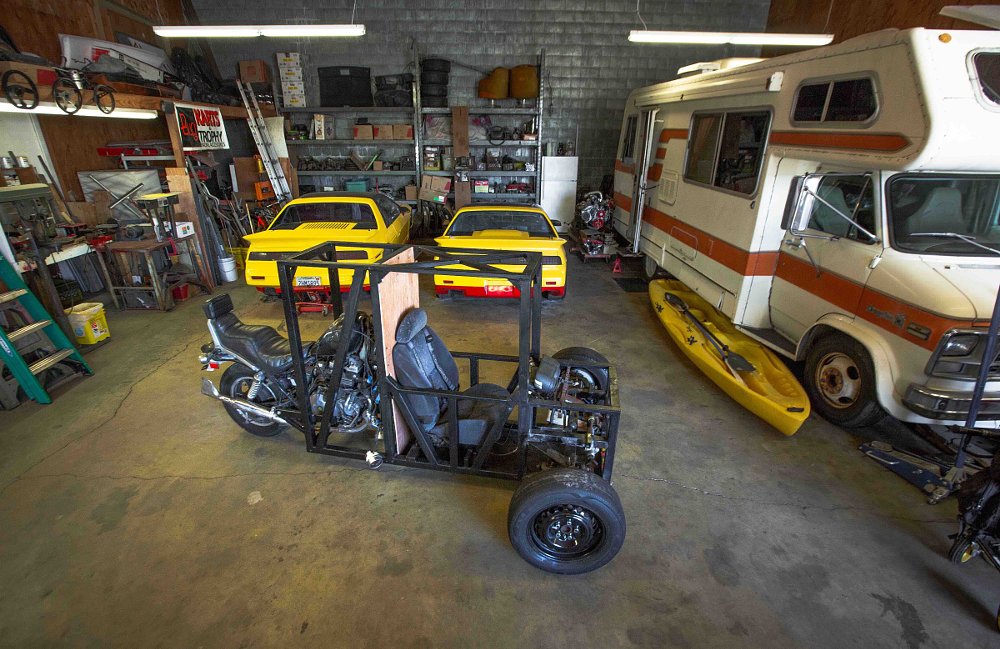
Even if we did get it running, we needed an event as ruthlessly absurd as the rig we had discovered. We came as close as we could by signing up for the Halloween Hillclimb, which is held every year on the grounds of Glen Helen Raceway in San Bernardino, California. The event welcomes everything from factory tank-shift hillclimb machines from the 1930s to modern dirt bikes, but most people just embrace something weird — two-stroke three-wheelers, vintage Harleys and Triumphs, pull-start mini bikes, and a wacky costume to go with each one. It would be the perfect test for our tumor-cage, and we had four days to get it from the back of its dusty warehouse to the starting line at the bottom of a hill at Glen Helen.
First, the “who” and the “why”
Unlike the contraption itself, its owner, Rich, was not demented or misshapen at all. Just a polite fellow from Long Island with an affection for the Pontiac Fiero and pleated pants. He explained that he, too, had inherited the project because he loved the idea. He wanted the motorcycle feeling of wind in his face and a thumping exhaust, but also the stability of more than two wheels and the safety of metal around him. He attached the A-arms and wheels from one of his beloved Fieros to the front of the cage, and began rerouting all of the motorcycle controls (throttle, brakes, clutch, shifter) to the vicinity of the Dodge Neon seat in the middle of the cage. But eventually his automotive projects took priority and the mutant Kawasaki collected dust. Until he found his soulmates, the Throttle Out team, via Craigslist.
As we eyeballed the bike in person, we formed a plan. For the sake of simplicity (and, y’know, because the show has two hosts) we abandoned the concept of it being a one-person vehicle. It seemed like if we could get the Kawasaki running and salvage the controls we could have one person sit on the motorcycle portion to control throttle and shifting, while the other person sat in the car seat steering the rig and braking. (Oh yeah, it also needed brakes.) The whole scheme had a whiff of Sport Utility Cycle about it, but then again we were surprised at how well that worked. Rich offered to let us work on it in his shop until we got it moving, then we would transfer it to the Throttle Out Garage.
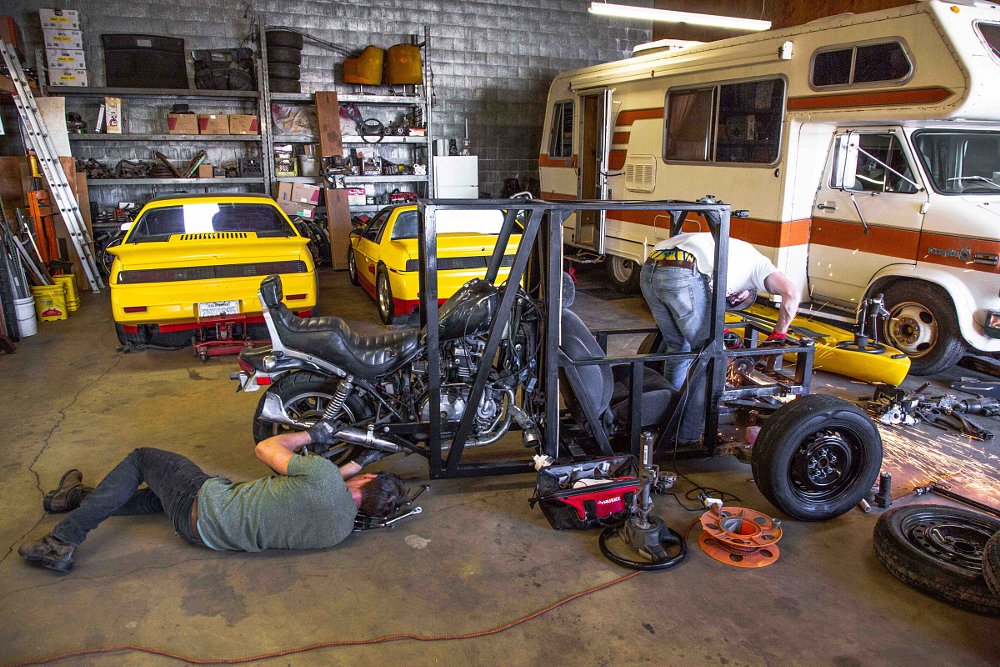
We decided the first task ought to be hooking up the steering assembly, since collectively we had zero experience retrofitting automotive systems to a chunk of metal. The Fiero rack and pinion seemed like it would work, so we salvaged a steering column from Rich’s bin and chopped it down to fit the stubby front end. With everything lined up and tack-welded in place we gave the steering wheel a spin only to be met with a surprise: turning to the left made the wheels turn right, and vice versa. The pinion box was in upside down. Almost as if two motorcycle guys were working with car parts they didn’t understand. We backtracked through some of the work we had done, flipped the box, and welded everything in place. Steering achieved.
Slightly ashamed from the snafu up front, we moved to the back of the rig in the hopes that working on a motorcycle would make us feel better. Aside from not having a fork, the 454 LTD’s condition might be best described as shipwreck chic — there were horrible holes in the headers (as well as inexplicable fishtail exhaust tips), the fuel tank smelled stale, and the wiring was a mess. Hogging out the carbs was step one, but when we tried to fire it up we realized the ignition assembly had been absorbed into a rat’s nest of wires around the headstock. A 20-minute stint of poring over a wiring diagram and some trial and error got us to hear the mighty 454 for the first time. The sound was heinous, but it ran. A handlebar from a BMX bicycle was welded to the headstock to carry the throttle tube and clutch lever, and the tachometer was mounted in the general vicinity.
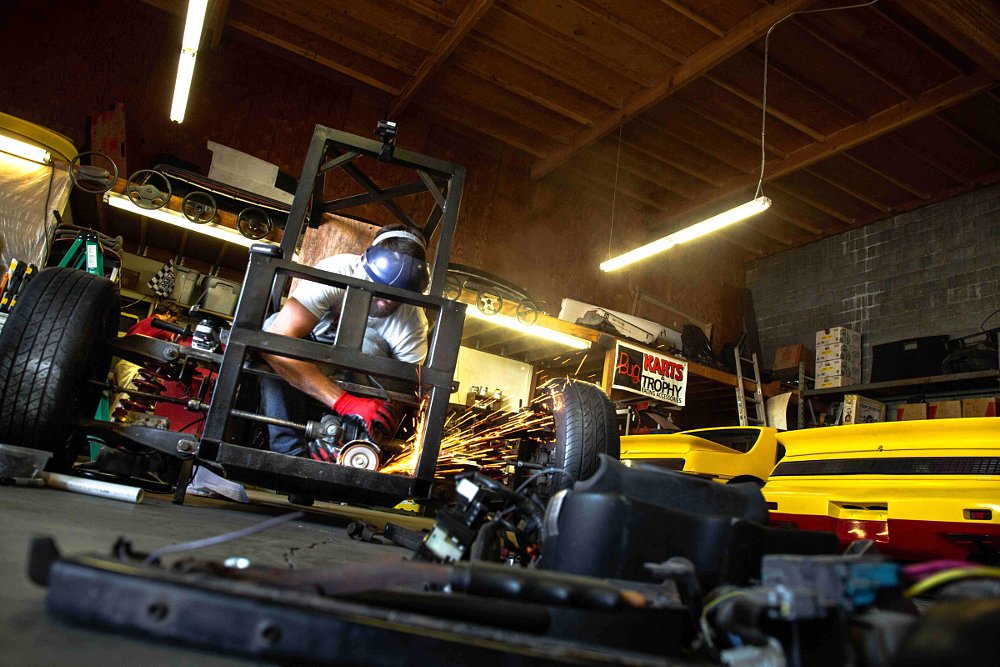
At this point we had invested enough time that we desperately wanted to see if it moved under its own power. Front brakes be damned, the rear brake on the Kawasaki worked okay and we had remounted the pedal so that it was kickable by the co-pilot. It was rolled out into the sunshine like an ill-conceived trebuchet ready to be fired for the first time. We put on helmets and made sure to point it in the right direction. Sure enough, it worked. It sounded like a Ninja 300 with pneumonia but it trundled around the parking lot in front of Rich’s warehouse with just enough spring in its step to bring new life to our mission. The next step was to get it to Throttle Out HQ for final touches and dressings for the Halloween Hillclimb.
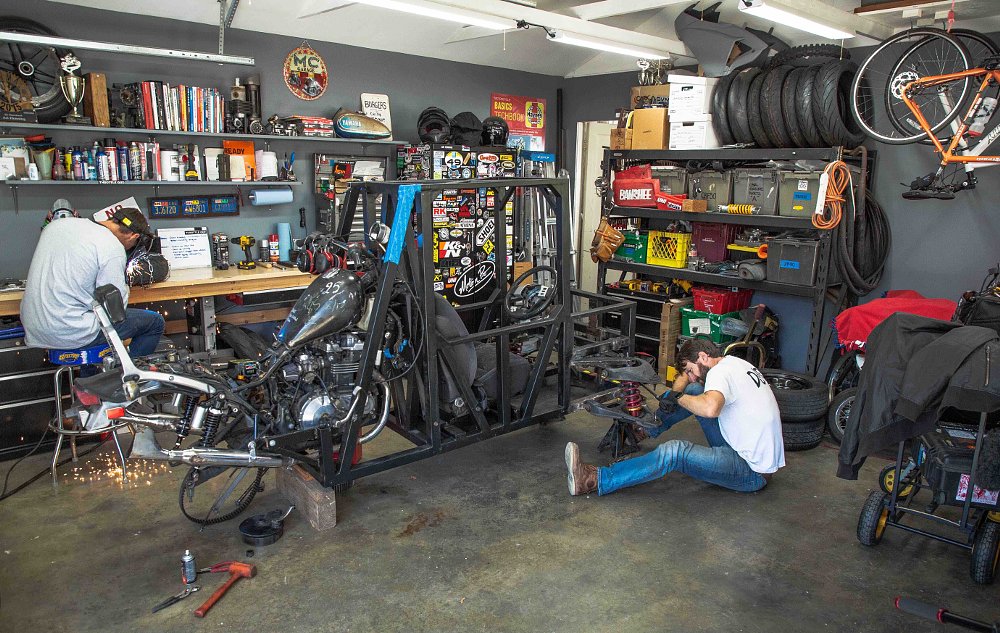
First up at the TO Garage was the installation of front brakes. We bolted to the frame a simple, automotive master cylinder along with a lever made from steel pipe to activate the plunger, and then proceeded to strike out at three auto parts stores trying to find fittings that would allow us to plumb the Fiero brakes. A quick Google Maps search showed a brake specialist nearby, so we hopped on Ari’s scooter and brought our brake mess along. Inside C.H. Topping we found a treasure trove of brake-system expertise three generations old, replete with hand-painted signs and WWII-era machining equipment. For a hundred or so bucks, custom lines were on the way.
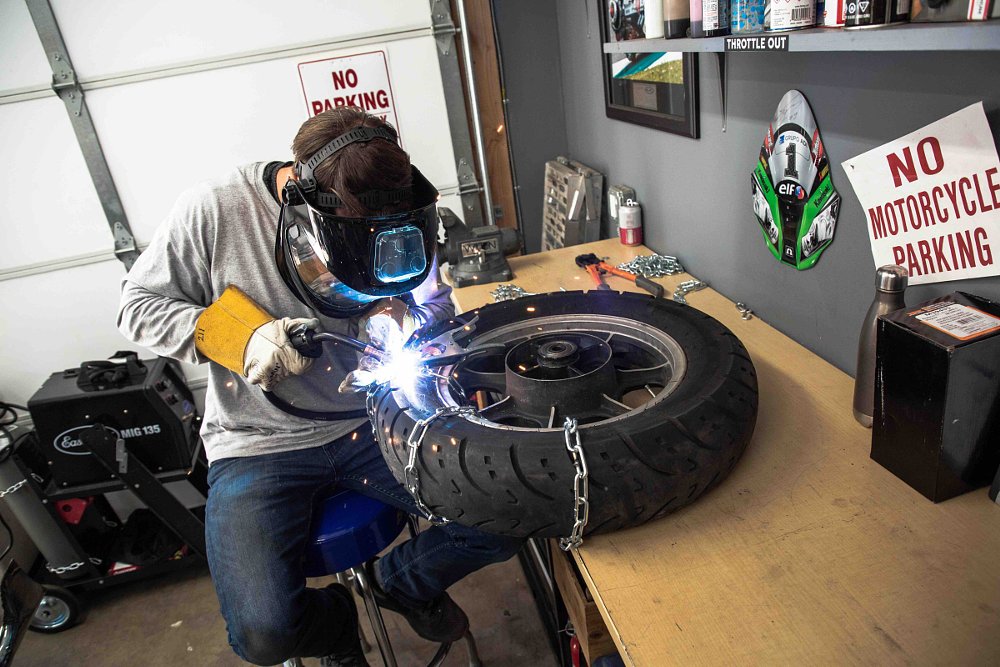
Back at the garage, we slapped on some dirt-cheap shocks from Amazon that raised the ride height of the Kawasaki a couple of inches, and two 17-inch spare wheels from a Subaru Forester that (sort of) matched the Fiero hubs. The rig was taller, which we figured would help trying to climb a hill. Some weld was slapped on the headers so the engine could breathe, and a compression check on the cylinders showed them to be in reasonable health. We couldn’t find any suitable knobby tires in cruiser sizes, so the final performance feature was wrapping the drive wheel with utility chain. It lent an air of aesthetic legitimacy to the beast, and hearkened back to the early days of hillclimbing, when chains were everyman’s way to get the rear wheel to hook up.
Hill not so climbed
The big day arrived and we headed to Glen Helen with our rig dolled up and costumes in hand. With the metal box around the pilot painted silver and draped in seaweed, the "cage diver" was chased by a fearsome shark perched on the motorcycle seat. We dubbed it The Cage Driver and hoped we’d get more thumbs up than scowls from the other participants. But any fear we had of being the only ones with a screw loose quickly vanished when we entered the paddock at the Halloween Hillclimb. The spread of machines was nearly as diverse as the outfits, which varied from an office worker, to a rainbow lollipop, to an excellent purple-velvet Prince getup. People riding the vintage hillclimbers were decked out in period sweaters and knee-high boots.
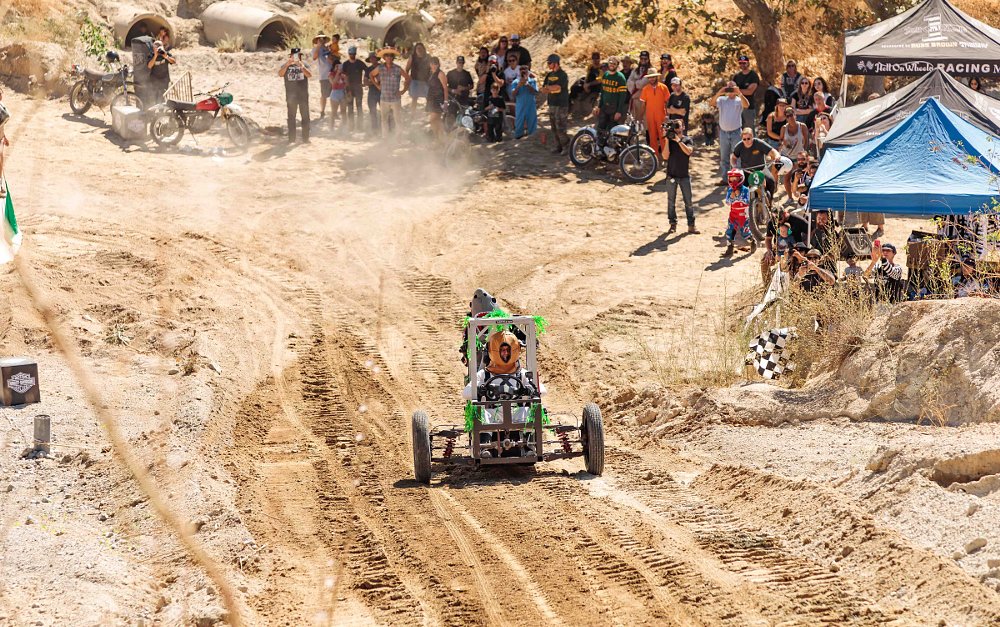
Goofy as the costumes were, the practice runs showed that people were pretty serious about getting up the hill. Aside from some of the mini bikes struggling to make it more than 40 yards into the slope (including Prince), most of the machines were scampering up the hill pretty well. The Cage Driver was holding up well during the parking-lot test runs — admittedly low on thrust but the chained rear wheel and custom front brakes were performing admirably. Our nerves were tingling as we rolled up to the bottom of the hill for our first attempt. To put a finer point on it, we were genuinely concerned about the rig petering out, rolling back down the hill out of control, and then capsizing. At which point one of us would be trapped and the other either flung clear or ground up underneath. Spectators clearly shared some of our worries, as evidenced by one guy walking up and asking if we “had our affairs in order.”
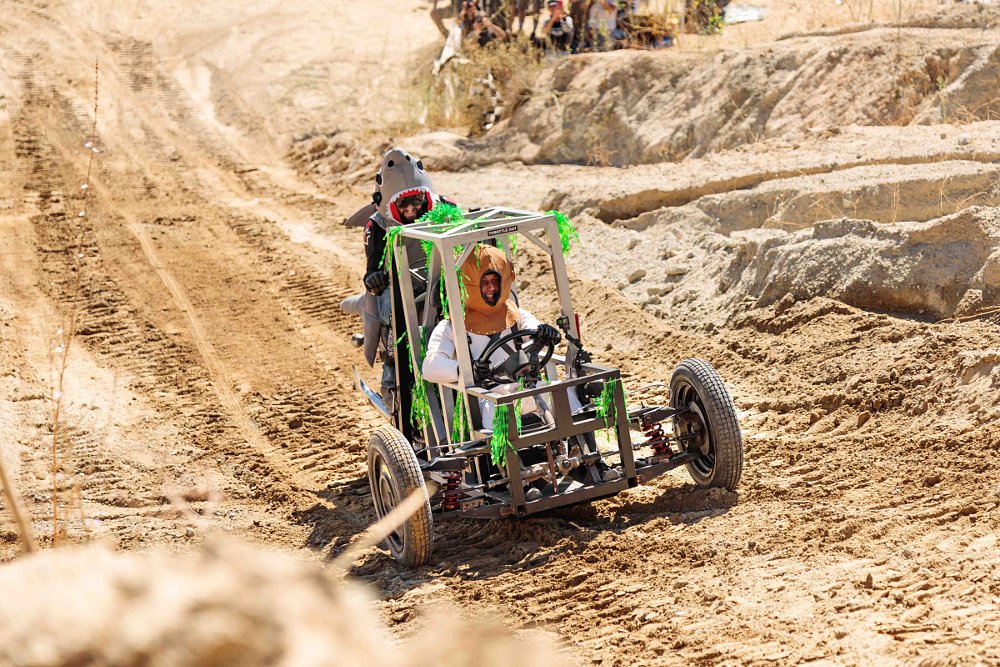
The organizers allowed us a small running start and we took our first stab at the hill. It didn’t rev all the way out but with both cylinders firing the rig clattered toward the initial ascent. Even riding the torque curve in first gear the Cage Driver started to lose steam. The chain dug in but the engine wouldn’t give more revs and gravity was doing its thing. Slipping the clutch got the tire to spin feebly, but only about as far up the hill as Prince had made it our contraption sputtered to a stop. We backed down from our anticlimax and the crowd gave us a sarcastic cheer.
Regrouping so things can get worse
What followed was a comedy of bad luck. We tried to re-jet the carbs in order to pull more revs from the engine, but during our two test rides the starter motor failed.
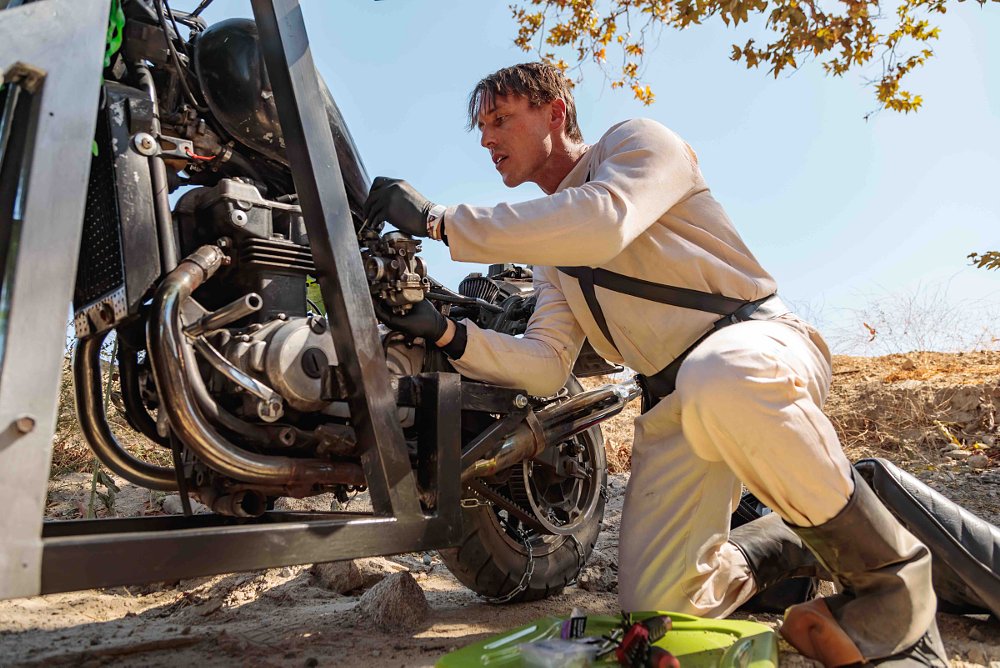
“That’s okay,” we said to each other, “even if the jets didn’t help at least we can bump start it and do some donuts in the parking lot to make ourselves feel better.” On our way to do that, the electronic system malfunctioned and (unbeknownst to us at first) began overcharging the lithium-ion battery. Eventually the Cage Driver stalled and started to smoke ominously. The battery failed in spectacular style, nearly burning the whole rig to the ground. Tesla drivers, we feel your pain — to the tune of the $999 we spent on this thing.
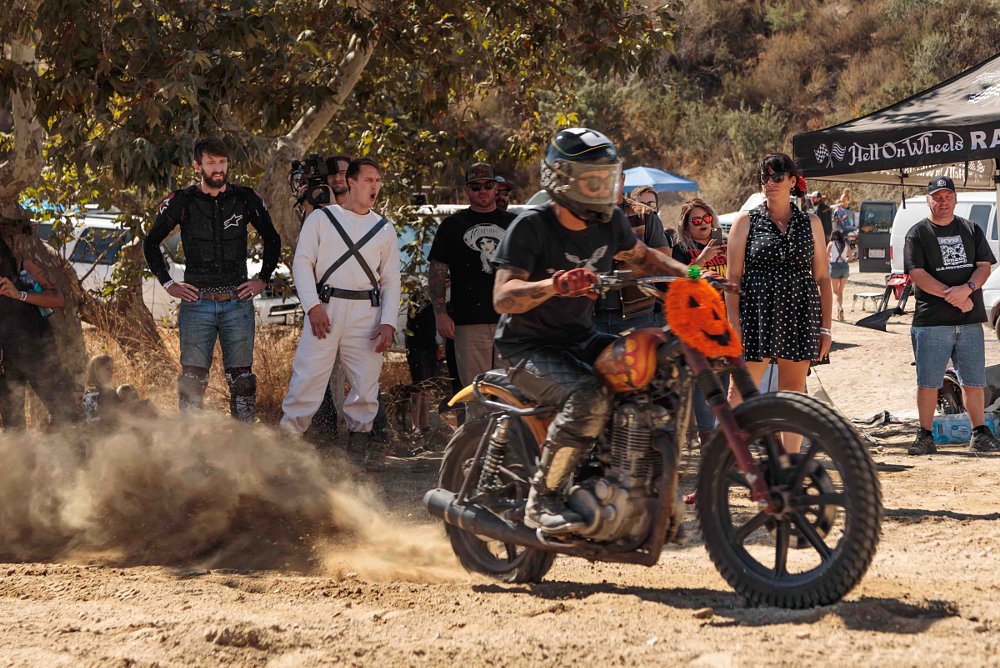
It was, by all accounts, an utter failure. It was too heavy to make a proud run at the hill, and then failed at so many points that it almost burned without having enough power to crash. For us as competitors, it was embarrassing, but we did learn a thing or two about a new slice of motorcycling culture. First, that hillclimbers are as generous as any racers. When the Cage Driver had taken its final breath, a fellow tripod entrant loaned us his stretched, two-stroke, 360 cc motocross three-wheeler to run up the hill. And boy did it run, screaming to the top of the hillclimb like it was an on-ramp to the freeway. Our bike was a failure, but we still got a view from the top of Glen Helen thanks to Jerry. Dressed in a shirt and tie, caked with dust.
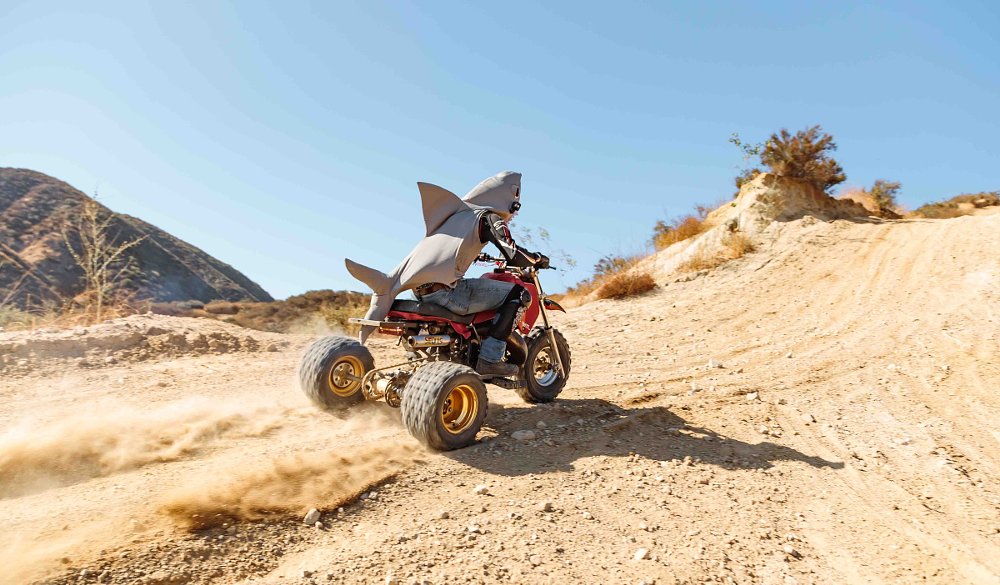
Our three-wheel savior, Jerry, was a shining example of what the Halloween Hillclimb has become. A community of people that, at first glance, might look rough around the edges. But as with so many areas of motorcycling, it’s best not to let the scruffy veneer tell the story. Everyone laughed and clapped their way through the day, cheering for the smooth runs and complete debacles alike. Beers were consumed, people were encouraged, and kids bopped around on mini bikes to their hearts’ content. Funny things happen when you shop for cheap motorcycles on Craigslist.




